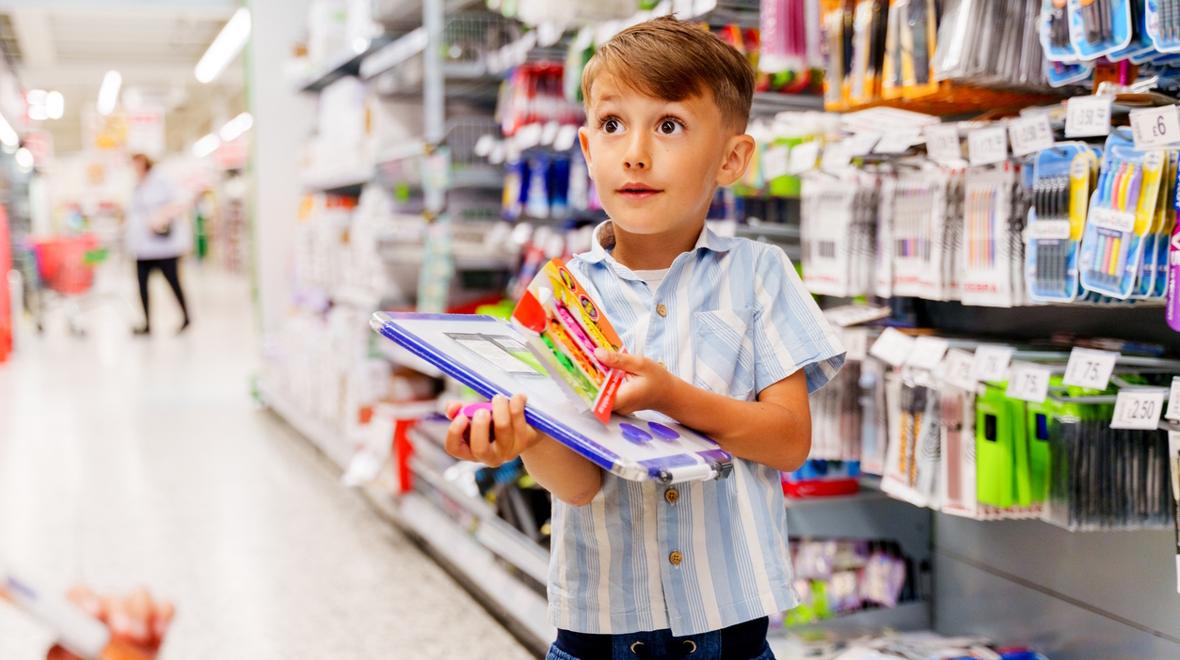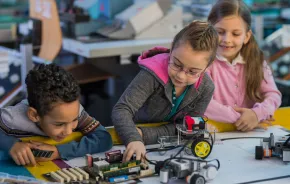Practical Back-to-School Tips From Local Experts

Photo:
iStock
Get your shop on: Julianna Poplin
Julianna Poplin is a professional declutterer who helps her clients tame their stuff in order to live more intentionally — and frugally. She blogs at The Simplicity Habit, and has two daughters. When it comes to back-to-school shopping, Poplin says, “The biggest thing is [getting overwhelmed], which comes from procrastinating. There’s a tendency when we’re stressed to overbuy.” Here are Poplin’s top tips for buying just enough of the right stuff.
1. Start early
When you shop at the last minute, the selection is bad, you’re pressed for time, and it’s easy to get stressed out. Instead, break back-to-school shopping into manageable bits and spread it out over the summer.
2. Make a list
Never shop without a list. Lists help you avoid impulse and duplicate purchases, and they prevent you from buying the wrong-size binder or a lunch box with the wrong superhero on it.
3. Shop at home
Backpacks and lunch boxes don’t have to be replaced every year if they are still in good condition. If your kids’ clothes still fit, hold off on buying new ones. And if you have unopened boxes of crayons and markers in your house, add them to the school supplies instead of buying more.
4. Buy ahead
Don’t buy school clothes that fit perfectly in September or else your kid might need another new wardrobe by Christmas. Instead, get the next size up so they can wear things for the whole school year.
5. Shop alone
Shopping together for school clothes is an annual tradition, but the truth is, hardly anyone enjoys it. Especially when your kids are little, spending hours in the dressing room is torture for moms and kids alike. You probably already know their size and what they like anyway, so shop without the kids. You won’t have to wrestle them in and out of dressing rooms or listen to them beg for things that you don’t want to buy.
6. Talk about marketing
Sometimes you have to bring the kids along; maybe they are picky about shoes, or they’ve just had a growth spurt and you’re not sure about their new size. When you go together, talk about the difference between wants and needs. Explain how advertising and store displays manipulate people into purchasing things they don’t need. Not only will it cut down on the “gimmes,” it teaches kids important lessons for when they are old enough to shop on their own.
7. Compromise
“Don’t fight over clothes. As long as it’s appropriate, let kids wear what they like,” suggests Poplin. “But don’t spend money on silly trends either.” Explain to your kids why your family makes the choices it does and hold firm on not buying trendy accessories or items emblazoned with brand-name logos. At the same time, don’t waste money on frilly dresses if your daughter prefers to wear sweats.
8. Give choices
Even if you shop from a list and don’t buy a lot of extras, “Give kids choices, rather than entering negotiations,” advises Poplin. Let kids know ahead of time that they can buy three fancy pencils, or that they get to choose their lunch box. That way, it’s easier to avoid negotiating over every little thing that catches their eye.
9. Be frugal — to a point
Shopping the Just Between Friends sales, consignment stores and clearance sales can save you a lot of money and help you get higher-quality goods for lower prices. But don’t let the price tag be your only guide. Cheap backpacks need to be replaced more often, and cheap pencils splinter every time you try to sharpen them. Be willing to spend a little more where it counts.
10. Consider your storage space
“Balance the need to be frugal with the desire for simplicity,” says Poplin. “Don’t toss something if you’re just going to have to rebuy it next year.” If you have enough space, hang on to those outgrown soccer cleats for a younger sibling. Buy extra school supplies on clearance and save them for next year. But no matter how big your garage is, “If you know they won’t use it again, pass it on or donate it,” says Poplin.
Up next: Routines to counteract chaos: Sarina Behar Natkin, LICSW











